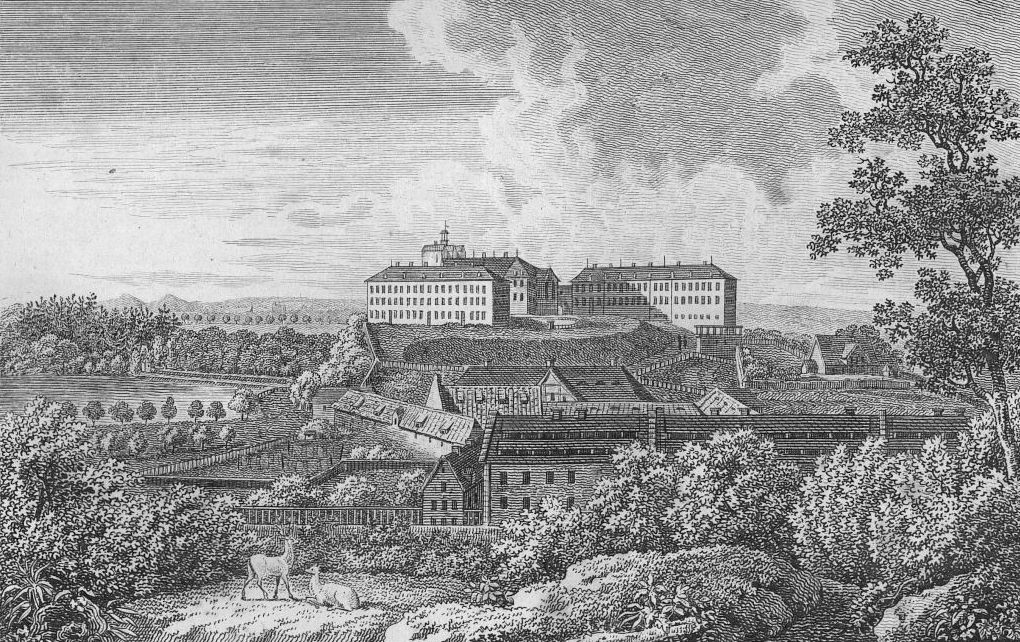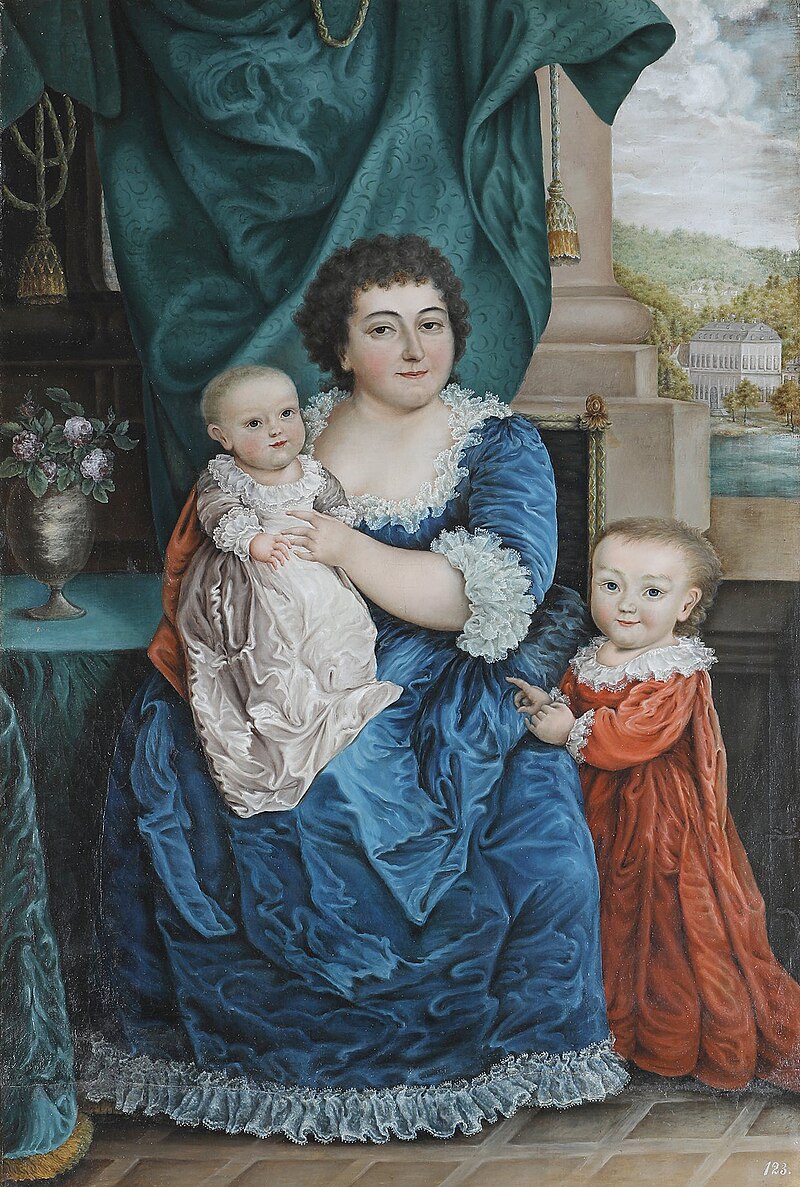by Susan Flantzer
© Unofficial Royalty 2020
Principality of Lippe: Originally called Lippe-Detmold, the Principality of Lippe came into existence in 1789 when it was raised from a County within the Holy Roman Empire to a Principality. Leopold I, Count of Lippe-Detmold became the first Prince of Lippe.
At the end of World War I, Leopold IV, the last Prince of Lippe, was forced to abdicate on November 12, 1918. However, Leopold negotiated a treaty with the new government that allowed his family to remain in Lippe. Today the territory that encompassed the Principality of Lippe is located in the German state of North Rhine-Westphalia.
*********************

Credit – Wikipedia
Pauline of Anhalt-Bernburg was not only Princess Consort of Lippe, she ably served as Regent of the Principality of Lippe for eighteen years during the minority of her son Leopold II, Prince of Lippe. The social work that she started in Detmold, then in the Principality of Lippe, now in the German state of Saxony-Anhalt, continues today with the charity she founded, the Princess Pauline Foundation (Fürstin-Pauline-Stiftung in German). Pauline is considered one of the most important rulers of Lippe.

Ballenstedt Castle, Pauline’s birthplace; Credit – Wikipedia
Princess Pauline Christine Wilhelmine of Anhalt-Bernburg was born at Ballenstedt Castle in Ballenstedt, Principality of Anhalt-Bernburg, now in the German state of Saxony-Anhalt, on February 23, 1769. She was the youngest of the two children of Friedrich Albrecht, the reigning Prince of Anhalt-Bernburg and Princess Louise Albertine of Schleswig-Holstein-Sonderburg-Plön. Sadly, Pauline’s twenty-year-old mother died from measles on March 2, 1769, one week after Pauline’s birth.
Pauline had one elder brother:
- Alexius Friedrich Christian, Prince and from 1807 Duke of Anhalt-Bernburg (1767 – 1834), married (1) Marie Friederike of Hesse-Kassel, had two daughters and two sons, divorced due to Marie Friederike’s progressive mental illness which their two surviving children inherited (2) morganatic marriage to Dorothea Fredericka of Sonnenberg (1781 – 1818), Dorothea died four months after the marriage (2) morganatic marriage to Dorothea’s sister Ernestine Charlotte of Sonnenberg (1789 – 1845), no children
Pauline and her brother Alexius were educated together, supervised by their father. Receiving the same education as a brother was unusual at that time but Pauline’s father recognized her intellect and the education she received would prove useful during the eighteen years she served as the Regent of the Principality of Lippe. Pauline excelled at her studies, learning French, Latin, history, and political science. Her education was strongly influenced by Christian ethics and Enlightenment ideas including the writings of Johann Heinrich Pestalozzi and Jean-Jacques Rousseau. By the time she was thirteen-year-old, Pauline was assisting her father in his government affairs. First, she took over the French correspondence and then all correspondence between her father’s residence at Ballenstedt Castle and the government offices in Bernburg.
In 1795, Pauline agreed to marry Leopold I, Prince of Lippe. Throughout Leopold’s upbringing and education, he exhibited a lack of strength of character, a lack of interest, a lack of concentration, and a tendency to mental disorders. Leopold had succeeded his father when he was fourteen years old and took over the reins of government on his 21st birthday in 1789. However, by the next year, Leopold’s mental disorders interfered in his role as reigning prince and he was deemed incapacitated by the Reichskammergericht (Imperial Chamber Court), one of the two highest judicial institutions in the Holy Roman Empire, and placed under guardianship. In 1795, the guardianship was conditionally lifted after Leopold’s condition improved and that is when Pauline agreed to marry him. On January 2, 1796, at Ballenstadt Castle in Ballenstedt, Principality of Anhalt-Bernburg, now in the German state of Saxony-Anhalt, Pauline and Leopold I, Prince of Lippe were married.

Pauline and her two sons; Credit – Wikipedia
Leopold and Pauline had two sons and a daughter who survived for only one day:
- Leopold II, Prince of Lippe (1796 – 1851), married Princess Emilie of Schwarzburg-Sondershausen, had six sons and three daughters including three reigning Princes of Lippe
- Prince Friedrich (1797 – 1854), unmarried, served in the Imperial and Royal Army in the Austrian Empire
- Princess Luise (born and died 1800)
Because of Leopold’s tenuous mental condition, Pauline became his governmental adviser and colleague, staying mostly in the background and avoiding anything that could be interpreted as exceeding her duties. Within the next few years, Leopold developed intestinal tuberculosis and his mental disorders returned with memory loss. Leopold I, Prince of Lippe died on April 4, 1802, at the age of 34. As Leopold I’s son and successor Leopold II, Prince of Lippe was just five-years-old, his mother Pauline very capably acted as Regent of the Principality of Lippe until 1820.

Pauline, circa 1801; Credit – Wikipedia
Among Pauline’s many accomplishments during the eighteen years she served as the Regent of the Principality of Lippe were:
- A vocational school for poor children and orphans (1799)
- A hospital with a first aid center (1801)
- A voluntary workhouse for adult charity recipients (1802)
- The first daycare center in all of the German monarchies (1802)
- The abolishment of serfdom (1808)
- Maintaining the independence of the Principality of Lippe during the Napoleonic Wars (1803–1815)
- A new constitution was adopted (1819)
Pauline was most proud of her social accomplishments. An orphanage had existed since 1720 and a teacher training college had been founded in 1781. She grouped the orphanage and the teacher training college with the institutions she had founded: the vocational school, the daycare center, the hospital, and the voluntary workhouse under the term “nursing homes” and housed them in a former convent, providing assistance from cradle to grave. These six institutions formed the basis of the Princess Pauline Foundation (Fürstin-Pauline-Stiftung in German), still in existence in Detmold, now in North Rhine-Westphalia, Germany. It is an independent Lutheran foundation devoted to charitable purposes and to childcare, youth work, and care of the elderly.
Pauline postponed the transfer of power to her son Leopold II, Prince of Lippe several times because of her disappointment in him and her belief that she could not turn over the government to him with a clear conscience. Finally, she announced her resignation as Regent on July 3, 1820. Leopold needed her assistance at first and Pauline ensured that her assistance was not overt. Once her son was settled in his position as Prince of Lippe, Pauline planned to retire to the Lippehof, a baroque palace built in Lemgo in 1734. However, before she could move from Detmold, Pauline died on December 29, 1820, aged 51, from a lung ulceration. Initially buried at the Church of the Redeemer (link in German) in Detmold, now in the German state of North Rhine-Westphalia, Pauline’s remains were later moved to the Mausoleum on the Büchenberg (link in German) in Detmold after the mausoleum’s completion in 1855.
This article is the intellectual property of Unofficial Royalty and is NOT TO BE COPIED, EDITED, OR POSTED IN ANY FORM ON ANOTHER WEBSITE under any circumstances. It is permissible to use a link that directs to Unofficial Royalty.
Lippe Resources at Unofficial Royalty
Works Cited
- De.wikipedia.org. 2020. Friedrich Albrecht (Anhalt-Bernburg). [online] Available at: <https://de.wikipedia.org/wiki/Friedrich_Albrecht_(Anhalt-Bernburg)> [Accessed 5 October 2020].
- De.wikipedia.org. 2020. Pauline (Lippe). [online] Available at: <https://de.wikipedia.org/wiki/Pauline_(Lippe)> [Accessed 5 October 2020].
- En.wikipedia.org. 2020. Princess Pauline Of Anhalt-Bernburg. [online] Available at: <https://en.wikipedia.org/wiki/Princess_Pauline_of_Anhalt-Bernburg> [Accessed 5 October 2020].
- Flantzer, Susan, 2020. Leopold I, Prince Of Lippe. [online] Unofficial Royalty. Available at: <https://www.unofficialroyalty.com/leopold-i-prince-of-lippe/> [Accessed 5 October 2020].
- Fürstin-Pauline-Stiftung – Die Diakonische Einrichtung Fuer Jugendhilfe Und Altenhilfe In Detmold. [online] Fuerstin-pauline-stiftung.de. Available at: <https://www.fuerstin-pauline-stiftung.de/de/welcome> [Accessed 5 October 2020].
